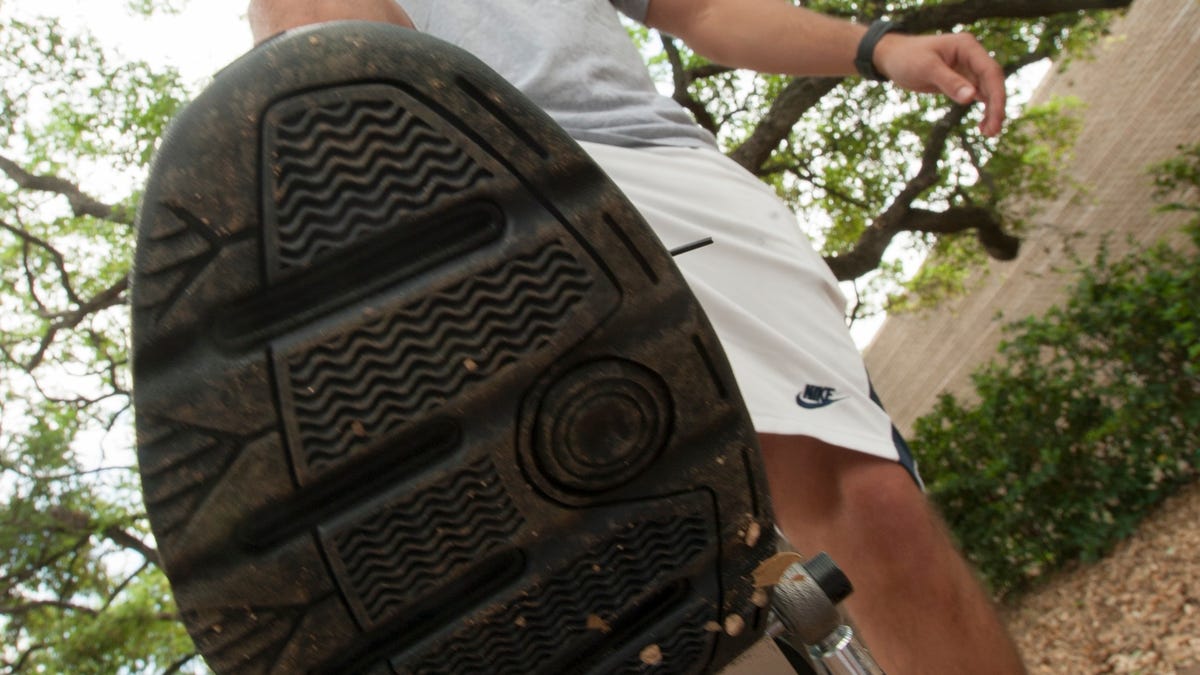Let your shoes do the charging
Rice University mechanical engineering students hope their PediPower shoes can one day power pacemakers, artificial hearts, and more.

After researching a device that draws energy from knee movement, some mechanical engineering students at Rice University decided to see if they could get the same result from another, less intrusive wearable item: a shoe.
With help from the Movement Analysis Laboratory at Shriners Hospital for Children in Houston, the resulting PediPower shoes harness energy from the force of the heel hitting the ground. The prototype -- while admittedly big, unattractive, and impractical to wear 100 percent of the time (think sleeping, showering, etc.) -- demonstrates that the simple act of walking may one day power a wide range of electronics, including medical devices such as pacemakers and artificial hearts.
"Theoretically, it would be something you just wear and you don't notice it," student Carlos Armada said in a school news release. "That's the end goal. If you showed someone the shoe while you're standing still, they wouldn't even see the device."
The PediPower, built into the heel of the prototype shoe, hits the ground first, at which point a lever arm strikes. This turns gears in a gearbox in the shoe's sole, which then drives an electricity-generating motor mounted on the outside of the shoe.
The shoe, which delivers almost 400 milliwatts of power during walking tests, sends the energy through wires to a belt-mounted battery pack. A voltage regulator keeps the flow steady even in the mid-stride moments of rest.
"It may be worth looking into having both the heel and the ball of the foot produce power" if the design is ever modified for a high-tech running shoe, Armada said.
The students developed PediPower for Cameron, an international, Houston-based company that forged a partnership with the Texas Heart Institute to apply its flow-equipment expertise to next-gen artificial heart pumps.
Of course, relying on a shoe to power life-sustaining medical devices would require a sophisticated and reliable storage system when the shoes are not in use. The students are optimistic that another team at Rice will turn their proof of concept into bigger and better (read: smaller and smarter) power-generating shoes.

